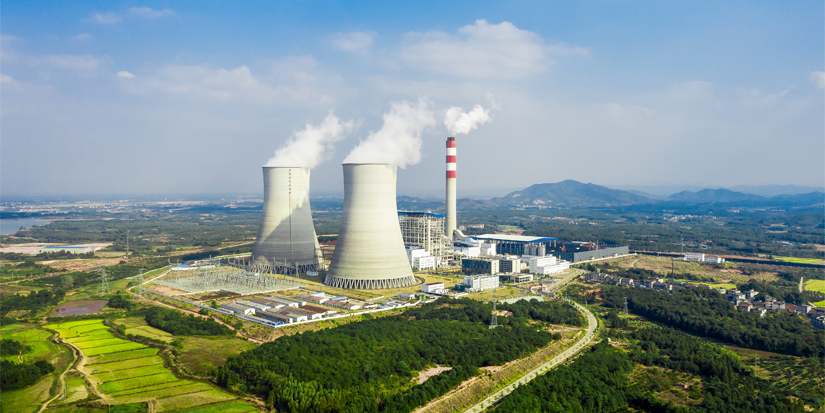Why an MLP Doesn’t Belong in Your IRA
-
 Ed D'Agostino
Ed D'Agostino
- |
- May 14, 2024
- |
- Comments
The path to the US’s energy future is becoming obvious. Over time, nuclear will become one of, if not the primary, sources of energy feeding our ever-growing demand for electricity. China and India are far ahead of the US on this, with hundreds of new reactors slated for construction.
The problem is our projected increase in energy demand is here now. The rapid growth of artificial intelligence is fueling the construction of massive new data farms, housing thousands of energy-hungry CPUs. The government wants us to drive electric cars, get rid of our gas stoves, and replace our central heat and AC systems with more efficient heat pumps.
It is not obvious how to reconcile today’s greener energy goals with a grid that depends on fossil fuels. You may believe the answer is more wind or solar power, combined with batteries, but that comes with another set of problems—our reliance on China for solar panels and the rare earth metals required to build them.
So, what’s the plan? How do we generate more electricity over the next two decades? That’s how long it will take (under current regulatory restrictions) for the US to build more nuclear power plants.
The only viable option to get us from today’s goals to a nuclear-powered future is natural gas. It is the perfect bridge to nuclear—at least, in the US. It’s cheap, abundant, provides baseload power, and burns far cleaner than other traditional fuels.
I am bullish on US energy. Energy has outperformed the market over the past four years, yet energy stocks are still relatively cheap. Louis Gave calls energy the new “anti-fragile asset of choice,” taking the place of bonds in a portfolio. Energy provides you with a geopolitical hedge, while paying generous dividends.
|
Several readers of our macro investment service, Macro Advantage, have asked why we have not added a company like Enterprise Products Partners LP (EPD) to the portfolio. After all, the company yields over 7%, and is well regarded and relatively cheap.
No argument. EPD is a fine business and worth considering, but… the company is structured as a Master Limited Partnership (an “MLP”).
MLPs are hybrid entities. They are considered partnerships for federal tax purposes, but they trade on public exchanges just like many corporations do. MLPs issue “units” instead of shares, and investors are the limited partners. MLPs do not pay income taxes at the business level. Instead, the MLP’s profits and losses pass through to the limited partners (aka, the investors), who receive a Schedule K-1 each year.
To maintain this setup, an MLP needs to produce at least 90% of its income from qualifying sources. These qualifying sources include the production and processing of natural resources. This is why MLPs are concentrated in the energy sector.
MLPs make minimum quarterly distributions, typically returning most of their distributable cash flow to investors. The often-repeated rule is that around 80% of these distributions tend to be tax deferred, but the mechanics here are complicated, and the amount that is deferred varies.
If this all sounds good so far, you are right. MLPs, for the right investor (consult your advisor) can be a fantastic source of steady, tax-deferred income. But as always, know what you are buying. If you invest primarily through an IRA or other type of tax advantaged account, an MLP might bring unexpected issues.
MLP investors will see some amount of “unrelated business taxable income,” or UBTI, listed on the Schedule K-1 they receive from the MLP annually. A few unpleasant things happen when you have more than $1,000 in UBTI from MLPs in your IRA. First, you need to submit another special tax form (Form 990-T). Second, you need to pay taxes on the UBTI. And third, in some rare instances you could endanger your IRA’s tax deferred status.
In short, investing in an MLP can offer tax benefits—and even some estate planning benefits if you get strategic. But MLPs also come with additional paperwork at tax time that you might not want to deal with. If you’re a high-net-worth investor or running a family office, you likely have the infrastructure in place to manage the extra work.
But if you are new to investing, invest primarily through an IRA, or merely place a high premium on simplicity come tax time, MLPs might not be the best way for you to invest in the energy sector.
Not to worry—there are plenty of traditional energy stocks worth a look, including the two domestic producers we hold in the Macro Advantage portfolio. If you’d like to learn more about them, consider joining us at Macro Advantage by clicking here.
|
Thanks for reading.

Ed D’Agostino
Publisher & COO
Tags
Suggested Reading...
|
|

 Ed D'Agostino
Ed D'Agostino




